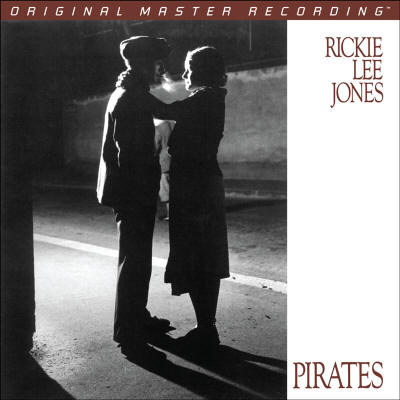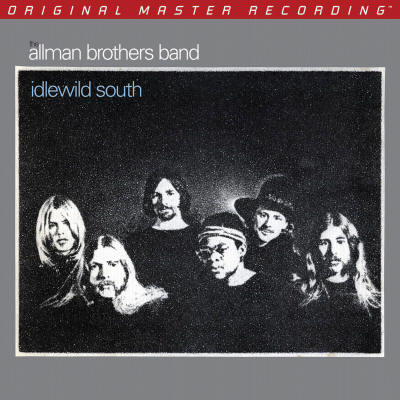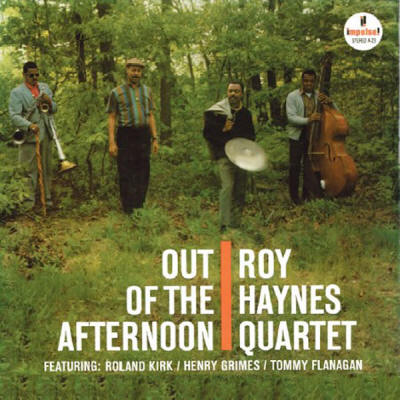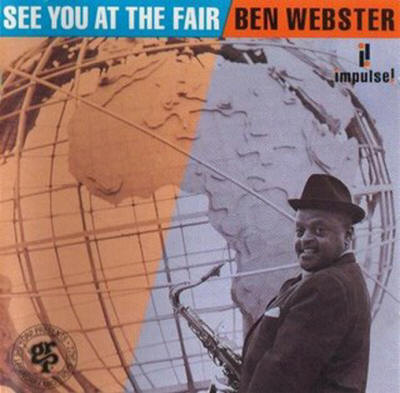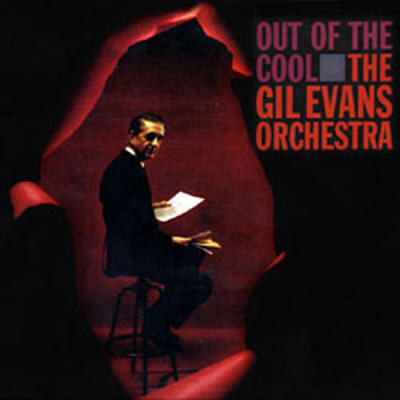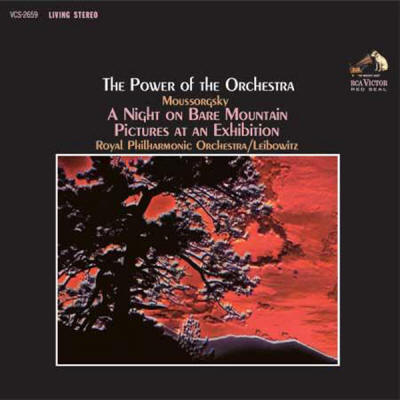|
You are reading the older HTML site Positive Feedback ISSUE 49may/june 2010
From the Vinyl Vault: A Potpourri of Some Reference Caliber Rock,
Classical and Jazz LP Reissues
It's an exciting time for analog fanatics! Can you imagine condensing a decade's worth of great recordings from any label and releasing them over the span of a year or two? New classical, jazz and rock albums are rolling off the record presses every week, adding to the difficulty in choosing which records to cover. So here's a small sampling of some new releases that have been seeing playing time on VPI table.
Rickie Lee Jones: Pirates. Remastering engineer: Rob LoVerde. MFSL 1-328. Pirates (original release). Producer: Russ Titelman and Lenny Waronker; Recording engineer: Lee Herschberg; Warner Bros. WB BSK 3432. Pirates (Promo). Pro-A-977. Recorded: 1981. It's hard to believe that Rickie Lee Jones' Pirates was released almost 30 years ago! It seems like just yesterday that I was standing in the checkout line at Tower Records' newly opened flagship Greenwich Village location buying Rickie Lee Jones' sophomore and soon to be most successful, release. But it wasn't the music on Pirates, however, that stuck with me over years, but the original album's bright, thin and metallic sound; that stood out in stark contrast to the warmth of her debut album (now we're talking here about the original UK pressing that is far superior to the US pressing). Then the light went off. The answer to the mystery was on the back of the album jacket: 3M digital system. So I readily admit to being mildly surprised that MFSL chose to reissue Pirates (though several of RLJ's albums have been recently remastered), given its digital roots. An email to Rob LoVerde, THE man behind the MFSL remasters, served to shed more light on matter. According to LoVerde, "although the original recording of this album was done using a digital recorder, the mixing was performed in the analog domain and printed to analog tape. The ¼-inch, 2-track, 30-ips, Dolby-A master tapes are what we used to create our LP and hybrid-SACD releases. I used MFSL's Studer A-80 tape machine to play back the masters. The same one I use for every project." I was also curious why Herschberg mixed down at 30 and not 15-ips (remember 30-ips has problems in the low end response). LoVerde responded to that query with, "The answer to the second question is anybody's guess. My guess would be that since the mixes have an extremely wide dynamic range, they [Herschberg/Jones?] probably didn't want the quieter sections to get lost in tape hiss...seems to me like they mixed at 30 IPS and used Dolby as sort of a "double barrel approach." Now from a musical perspective, Pirates is a distinct departure from Jones' debut album. Pirates is increasingly more introspective and less "bouncy" from her self-titled debut album. Jones tackles subjects very different than those of her debut album. Jones as usual, assembled an all-star supporting cast including the likes of Tom Scott, David Sanborn, Donald Fagen and Randy Brecker. In contrast to today's albums with 16 tracks and 2 listenable songs, Pirates has eight outstanding songs with the likes of "We Belong Together, Living it Up, Lucky Guy, Pirates and Skeletons." So the $64,000 question is: Can MFSL make a silk purse out of sow's ear? The answer is an unqualified yes; the MFSL Pirates reissue clearly betters the sound of both the promo or original pressings residing on my shelves. Pirates won't, however, ever grace anyone's sonic blockbuster list. The award for the most miserable sound goes to the promo Pirates pressing. This release is so dry, cryogenically cold, antiseptic and metallic, that it sends shivers down my back. (God only knows what Jones and Herschberg thought of the original digital recording and what the master sounded like before being "warmed up" by the digital-to-tape transfer). There's no low end extension and little mid-and upper bass on the promo; what mid and upper bass is present is ill-defined and boomy. The midrange and Jones' voice are sucked out and the upper octaves are excruciatingly bad. Any resemblance between real cymbals and those recorded on Pirates is purely coincidental. Cymbals are congested, smeared, anvil hard and lack any subtlety or shimmer. Exactly what one came to expect from early digital recordings. Next, the original release of Pirates. This pressing is cut at a slightly higher level than the promo and the sonics are slightly better. The piano displays a smidge more harmonic overtones, instruments are a little better focused and there's a touch more low end response. Although not quite as harsh as the promo, the original release is still liquid CO2 cold and metallic. And what happened to the cymbals and dynamics? When things get pushed, the cymbals fall apart and are congested, though not quite as harsh as the promo. By the fourth cut, I found my mind wandering and interest in the music waning. Finally, the 180 gram MFSL reissue, with the cartridge's VTA carefully adjusted to compensate for the record's increased thickness. From the first note, it's clear that the MFSL reissue is slightly warmer and more detailed without the overt harshness of either the promo or original pressing. The MFSL reveals slightly more of the reverb added to RLJ's vocals; unfortunately, her voice is still on the thin side, slightly sucked out, and two dimensional. On the plus side, her backup musicians are better rendered. Extremes are still nothing to write home about and cymbals still remain an enigma. So Kudos to MFSL for making once again available on vinyl one of RLJ's best recordings; unfortunately, this is also one of those recordings forever was ruined by the first generation of digital recorders.
Allman Brothers: Idlewild South. Producer: Tom Dowd. Engineers: Ron Alpert, Howie Alpert, Jim Hawkins and Bob Lifin. MFSL 301. Recorded: 1978. MFSL's Allman Brothers' Idlewild South is a far more successful reissue effort than Pirates. Not having listened to Idlewild South in years, I was shocked by just how well recorded this LP was given its rock'n roll roots. Idlewild South is not the typical ‘70s rock recording where the lead singer sounds like they're in the next county or a blanket was placed over the microphone. For a ‘70s rock album, Idlewild South is an unqualified sonic success. Those qualities included great soundstaging and being largely free of the solid-state hardness typifying many recordings of this generation. Upper octaves are a little softened but cymbals sound like cymbals, not mangled pieces of metal as on Pirates. Overall, Idlewild South is fairly transparent with a great feeling of liveness. Like Pirates, Idlewild South was The Allman Brothers' second release and features the band replete with lead guitarist Duane Allman and bassist Berry Oakley. Several of the songs from this album including "Revival, Midnight Rider and In Memory of Elizabeth Reed" were destined to become anthems of this Southern rock scene group's jams and road show act. "Midnight Rider" is best known for its opening acoustic and electric guitar riffs; "In Memory of Elizabeth Reed" is the group's tribute to Miles Davis; and "Revival" features a gospel chorus and tambourine backing Duane and Dickey. Light up the incense, have a seat in the bean bag chair and enjoy Greg, Duane, Berry, Dickey and the group rock on this classic rock recording!
Roy Haynes Quartet: Out of the Afternoon. Producer: Bob Thiele; Recording engineer: Rudy van Gelder. Impulse/Analogue Productions AS-23 (45 rpm); Recorded: May 16, 1962 (tracks 2-5); May 23, 1962 (tracks 1, 6-7). Timing is everything in life! And could Analogue Productions had any better timing than releasing Out of the Afternoon on the eve of Roy Haynes' 85th birthday? One of the more underrated drummers of his generation, Haynes' work was admired by none other than Charlie Watts of the Stones who was quoted in an interview with Ian Gordon McPherson 1994 as saying about Haynes, "…He did the Coltrane thing, and he did some wonderful records with Roland Kirk—Out of the Afternoon and all those. It's not the drum solos I like; it's the rhythm section drummer." (Ian Gordon McPherson, timeisonourside.com, 2000) Haynes' Out of the Afternoon traces back to Bob Thiele's first year at the reins of Impulse Records and was one of Roy's favorite sessions. As recounted to Ashley Kahn in Roy Haynes Snap Crackle, Haynes' inspiration for Out of the Afternoon came from his gig at the Five Spot. "We got excited about the idea of doing something together, so I took it to [Impulse head] Bob Thiele, and we did it. [Engineer] Rudy van Gelder is a big part of that album as well, he got that great drum sound at his studio in New Jersey." Featured alongside Haynes are the experimental Kirk and typically solid Flanagan. Numerous great solos by Grimes and Haynes lay down a solid bass foundation. Out on the Afternoon contains a number of Haynes originals including "Raoul, Snap Crackle (Hayne's nickname)" and perhaps the standout piece on the album, "Long Wharf." Sonically, one is hard pressed to find a better sounding, studio jazz recording than Out on the Afternoon. A comparison of the 45 rpm reissue to my unobtanium 15-ips/2-track reel-to-reel tape copy (unless Doc, Paul and Michael at Tape Project release this standout recording) reveals Steve Hoffman and Kevin Gray at work doing their usual magnificent tape-to-disc transfer. Compared to my 15-ips tape, especially played back using the newly arrived King/Cello tape preamplifier equipped with Mundorf Au/Ag Oil capacitors, the LP isn't quite as spacious sounding, three-dimensional, transparent or resolving. For instance, there's a greater sense of Haynes accompanying Flanagan in opening track of the tape. One also hears on the tape version of "Fly me to the Moon," there's more snap to Kirk's finger snapping, cymbal shimmer to Haynes' cymbals and extension and ease to Grimes' bass. In addition, the tape conveys more of Hayne's drum head's resonance along with a greater feeling of the drum's echo across back of stage. Place Out on the Afternoon atop your must-have LP order list! No, upon further reflection, just order it!
Ben Webster: See You at the Fair. Producer: Bob Thiele; Engineer: Rudy van Gelder. Analogue Productions/Impulse A-65 (45 rpm). Recorded: March 11, 1964. I've always found it curious that Rudy van Gelder's Blue Note recordings sound very different than his Impulse jazz efforts. Steve Hoffman, the mastering engineer in charge of reissuing both series for Analogue Productions revealed that, "The Blue Notes are recorded hotter on the tape which can add a sort of "overload" sound to everything. The Impulse stuff was recorded at normal level. That's pretty much a lot of it! Personal producer taste..." Recorded at the end of Webster's stay in New York City, there's nary a throwaway tune on See You at the Fair with such standouts such as the Arlen/Harburg "Over the Rainbow!" typified by the warmth and colors of Webster's tenor sax—or George and Ira Gershwin's "Our Love is Here to Stay" and "Someone to Watch Over Me." Or try the rather unusual use of a harpsichord instead of piano by Kellman on "Lullaby of Jazzland" or "While We're Dancing." See You at the Fair, like many Impulse releases, is much closer miked than RVG's Blue Note series (miking also varies from cut to cut). Microphone placement aside, what really defines this recording is its instrumental tonality, bass clarity and definition. And there were two changes in the system that really brought these qualities to the forefront in See You at the Fair. The first was the mounting of the soon to be reviewed and superlative sounding new ZYX Omega S Gold low output MC cartridge in the VPI JMW 10.5 arm. The second—and without doubt the biggest change—was the insertion of MIT's Oracle MA phono cable and MA-X interconnects into the system. These interconnects elevated the system to another level and revealed information on my albums and tapes never before heard. Prior to the MIT interconnects, cuts such as Ellington's "In A Mellow Mood See" were fairly transparent but were a little dark and didn't necessarily possess the greatest of instrumental clarity. Inserting the MIT Oracle ICs into the system opened up the sound, extended and solidified the low frequencies, greatly increased transparency and revealed more sense of the acoustical space. For instance, the MIT interconnects really brought out and highlighted Richard Davis' great bass solo on "See You at the Fair." Now there was minor problem with my copy of See You at the Fair. The album arrived with two copies of Sides 1 and 2 but sans Sides 3 and 4 (yes, at first thought it was déjà vu all over again!). To their credit, Acoustic Sounds promptly remedied the situation and I had a replacement copy in my hands in a matter of days! Another amazing remastering from the team of Hoffman, Gray and Kassem and highly recommended!
Gil Evans: Out of the Cool, Producer: Creed Taylor; Recording engineer: Rudy van Gelder. Analogue Productions/Impulse A-4 (45 rpm). Recorded November 18, 30 and Dec. 10, 15, 1960. "What I'm doing really is trying to let the musicians be heard the way they want to be heard. What it really is is the musician sound." Rudy van Gelder in interview with C. Andrew Hovan on allaboutjazz.com. To say that Out of the Cool with its Cool West Coast sound is one of the great Impulse recordings and a great kickoff to the storied history of the then fledgling Impulse Records might just be the understatement of the century. As revealed to Andy Karp at jazz.com, Out of the Cool was a RVG favorite; at the same time, it was one of Creed Taylor's and Impulse's first four releases (see also Analogue Productions 45 rpm release of Oliver Nelson's The Blues and the Abstract Truth). A long time personal favorite, I'm especially appreciative that Analogue Productions didn't make this the twenty fourth and last album released in the series! Out of the Cool was recorded soon after Evans' six week run at The Jazz Gallery and is especially noteworthy since it was his first solo recording after three straight releases with Miles Davis. Out of the Cool features the work of Johnny Coles, who some have compared to Miles Davis (there is a very different tone and style between the two), on trumpet. Colors and tension are the name of the game here. From the opening maracas and subsequent introduction of each instrument on "La Nevada," it's clear that this is a very, very special recording. At its best, the musicians are spread out and solidly anchored in place in the listening room. The soundstage is positively huge and instrumental tonality is exceptional. One thing though. Don't expect to find the instruments exactly as they're mapped out on the album jacket. For instance on "La Nevada," Ray Crawford's guitar is on the left of the soundstage; on "Bilbao," he's moved to the right (I assume this is due to how RVG blended the guitar feed into the mix eg. left or right track). There's a unique combination of dense complexity with subtlety—not to mention extremely wide dynamic range. At lower levels, the blend of tonal colors is nothing less than a great Indian dish. The only thing marring this reference recording is a slight hotness when pushed. Out of the Cool doesn't lack for highlights! There's Ray Crawford's sensational sounding guitar work. There's Jimmy Knepper's unbelievable trombone trombone solos and tonal completeness on "Where Flamingoes Fly." Then there's Tony Studd's bass trombone work and incredible sense of air on "Stratusphunk." Over the years I'd picked up an original and Alto pressing of Out of the Cool. My early pressing of Out of the Cool though isn't necessarily in mint shape and compared to the Analogue Productions release just sounds a little distorted, low frequencies are a little tubby, instruments are little brighter and the drums don't sound as clean or transparent. While there sounds like there's a little more air on the original, it's clear that's a result of added echo. The Alto was a very good reissue and resided on my reference disc list for quite some time. The Alto is cut a little hotter, has a little more echo and is brighter on dynamic passages. Another must-have LP from the Blue Note reissue series!
The Power of the Orchestra, Moussorgsky: Night on Bare Mountain/Pictures at an Exhibition. Rene Leibowitz, Conductor. Royal Philharmonic Orchestra. Producer: Charles Gerhardt; Recording engineer: K.E. Wilkinson. RCA VCS 2659 The Power of the Orchestra, Remastering engineer: George Marino, Sterling Sound. RCA VCS 2659 Analogue Productions (45 rpm); The Power of the Orchestra, Remastering engineer: Tim de Paravicini. Chesky Records RC30. Recorded: 1962. As triumphantly displayed on the jacket, this album pairs two classical sonic blockbusters on one LP—culminating in "The Great Gates of Kiev." For those unfamiliar with the origins of The Power of the Orchestra, this is one of the recordings coming out of the Decca/RCA agreement to cross license certain select titles. Performance wise, many will prefer Reiner's Pictures at an Exhibition for the performance, not to mention its top rank sonics. Over the years, I've owned several shaded dog copies of The Power of the Orchestra and found as my system improved, the sound of this Wilkie recording responded in kind. At its best, the Thee Power of the Orchestra possesses a wonderful bloom, sense of hall, powerful low frequency extension and beautiful string tone. Exactly everything one comes to expect from a reference caliber recording! The Analogue Productions release is not the first attempt at reissuing The Power of the Orchestra. Several years ago, Chesky Records reissued The Power of the Orchestra as part of their series of RCA reissues; The Power of the Orchestra, along with their reissue of Munch's and the BSO's performance of Ravel's Daphnis and Chloe, remain Chesky Records two best efforts. That said, the Chesky release, unfortunately, wasn't cut from the original 2-track master tape but a second generation copy. At that time, RCA refused to allow Chesky Records to remove the master tape from their premises; as a result, David Chesky had to chose between cutting the lacquer at RCA (with its less than SOTA facilities) or making as good a copy of the master tape as they could and ship the second generation tape to Tim de Paravicini in the UK to cut the lacquer. (the same issue reared its ugly head with the current Analogue Productions reissue). David Chesky opted for the latter choice in the hope that Tim's mastering genius along with his SOTA mastering system would make up for the tape generational loss. While the Paravicini mastered The Power of the Orchestra was a good effort, and again one really needs to adjust VTA, the reissue just lacks the last vestiges of musical information found on the original LP along with focus. The reissue still retains much of the original recording's sense of space, though strings are not quite as sweet. And another area where the later generation tape rears its ugly head is in the area of low end extension and dynamics. Overall, the Chesky Records reissue, just lacks the magic of the original RCA release, is a little washed out and not quite as riveting. Kassem ran into the same issues previously encountered by Chesky Records and couldn't use his usual talented tandem of California based Steve Hoffman and Kevin Gray to remaster Power of the Orchestra. So in this case, Chad opted to have RCA send the master tapes to George Marino at Sterling Sound, someone that RCA would trust with the masters, to cut the 45 rpm lacquer. And I find the Analogue Productions a mixed success (I really would have liked to hear what Mssrs. Hoffman and Gray could have brought out from the master tapes). The 45 rpm version of Pictures at an Exhibition and Night on Bare Mountain are cut at higher levels than other two earlier pressings. Yes, the reissue sounds very clean, dynamic, extended and transparent but the magic of the original recording is missing. Yes, the drums on the Analogue Productions release are tighter and more dynamic but further up the spectrum, violin strings are very brighter than the original (or Chesky), verging on solid-state-ish coloration. No, the 45 rpm reissue doesn't recreate, as only Wilkie could capture, the original recording's sense of space. No, the instruments don't have the sense of body of the original RCA release and the soundstage height, width and depth is shrunk. The gong on the AP release doesn't have the same sense of body, shimmer or weight of the original release; the attack of the harp isn't as defined. This is clearly a case of Analogue Productions being a victim of their extremely fine reissue track record and subsequent high expectations. Perhaps if one had never heard the original RCA release, they could live with the 45 rpm release. But once they heard the original, it would be all over. What I'd like to see is RCA, like they did with Classic Records, let Kassem send the master tapes to Hoffman and Gray. Alternatively, given my following comments on the new ORG/Impulse Coltrane reissues, let Bernie Grundman remaster the original The Power of the Orchestraa master tapes on his new, totally rebuilt mastering system! Stop the presses! While I don't have time to cover these reissues in this piece, PFO readers must get a hold of the limited edition, new Original Recordings Group (ORG) John Coltrane releases before they go out of print! Ballads, Live at the Village Vanguard and Crescent are nothing short of sensational and the best tape-to-disc transfer that Bernie Grundman has ever done! More on the ORG re-issues next time.
|

